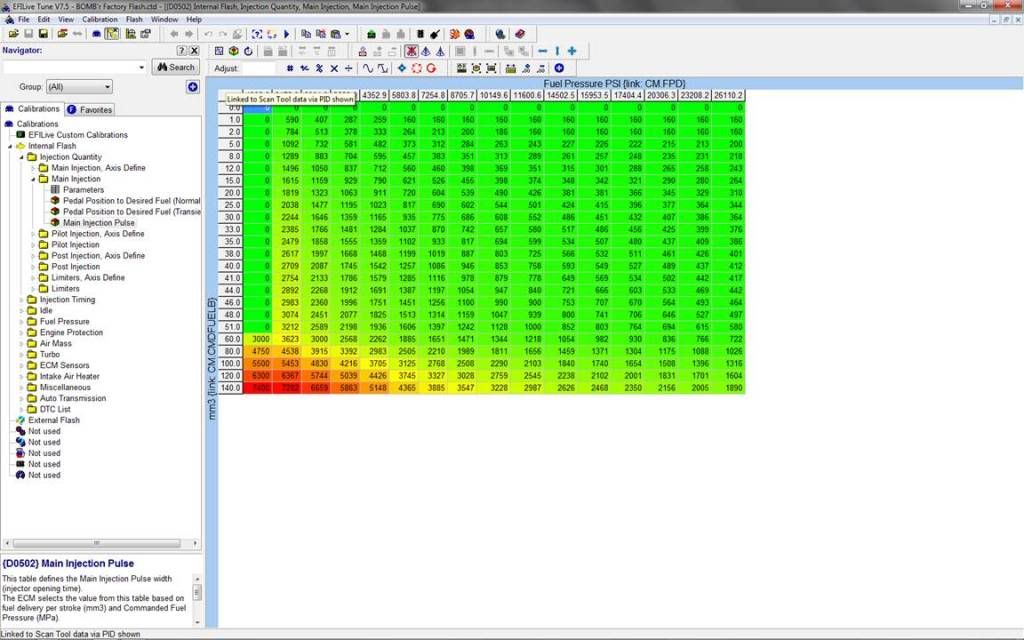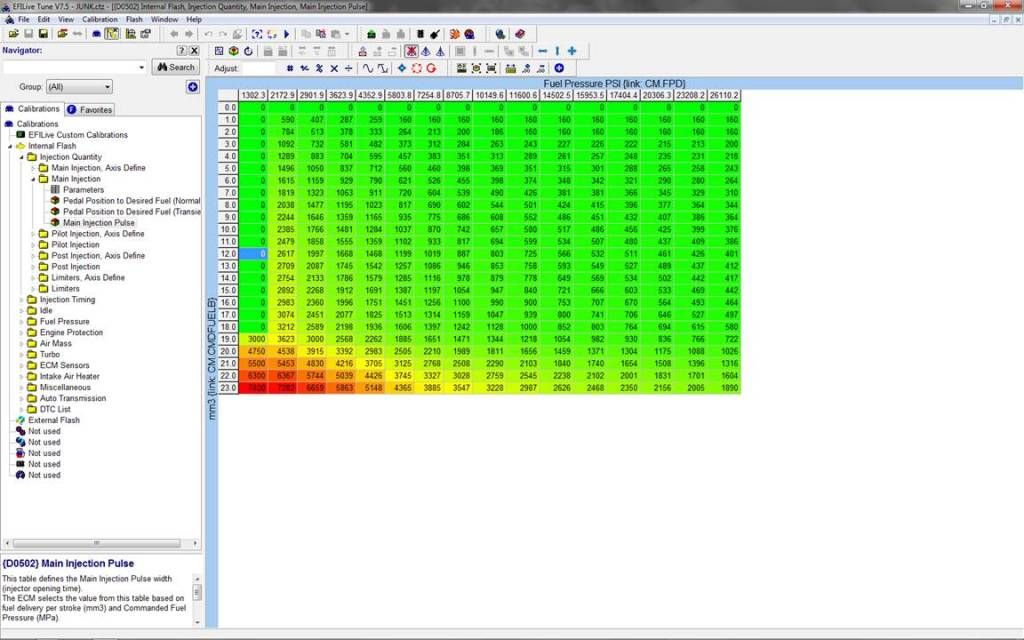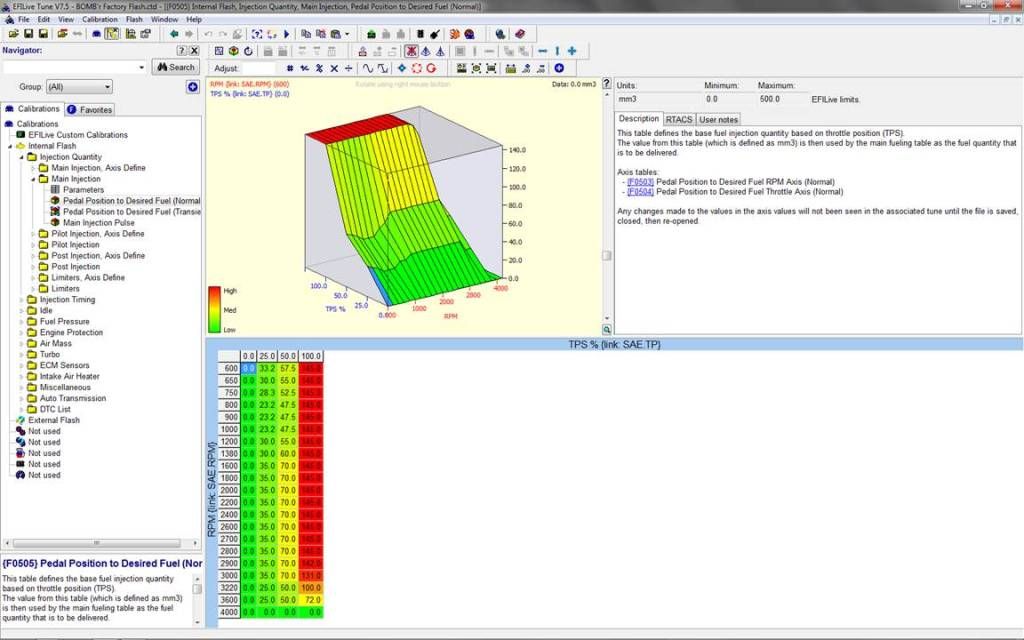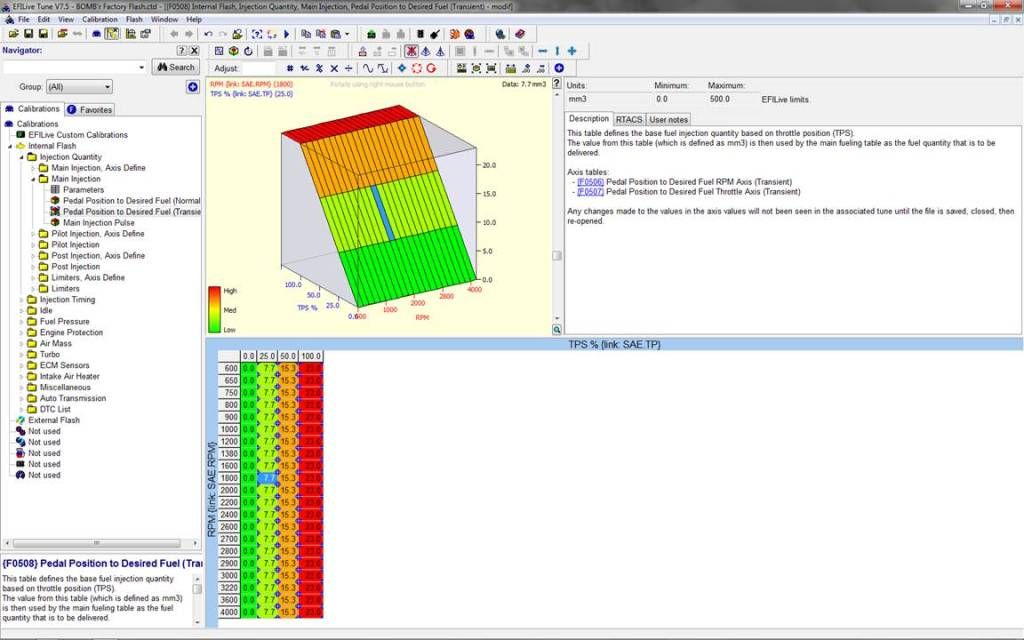In this table DO NOT look at mm3's as a PHYSICAL VOLUME, that's not what it is. It's actually more closely related to throttle position that anything else.
In a stock map, the value is 0 - 140 mm3's. This is simply a reference that NUMEROUS functions rely on.
You ARE NOT asking, for example, 25 cubic millimeters of fuel. What you're doing is telling the ECM that I'm at THIS throttle position.
Example, I'm at 2000 RPM's and I'm commanding 55mm3's of fuel. This results in 20993 psi of pressure being commanded.
NOW, this DOES NOT equate to a specific VOLUME of fuel injected, because what have I still not added?.....DURATION. Once I add duration, now I get a specific volume of fuel that is actually injected. Until we add duration, all I've done is told the fuel system to pressurize the resevoir to 20993 psi. Without a duration table, that pressure goes no where.




